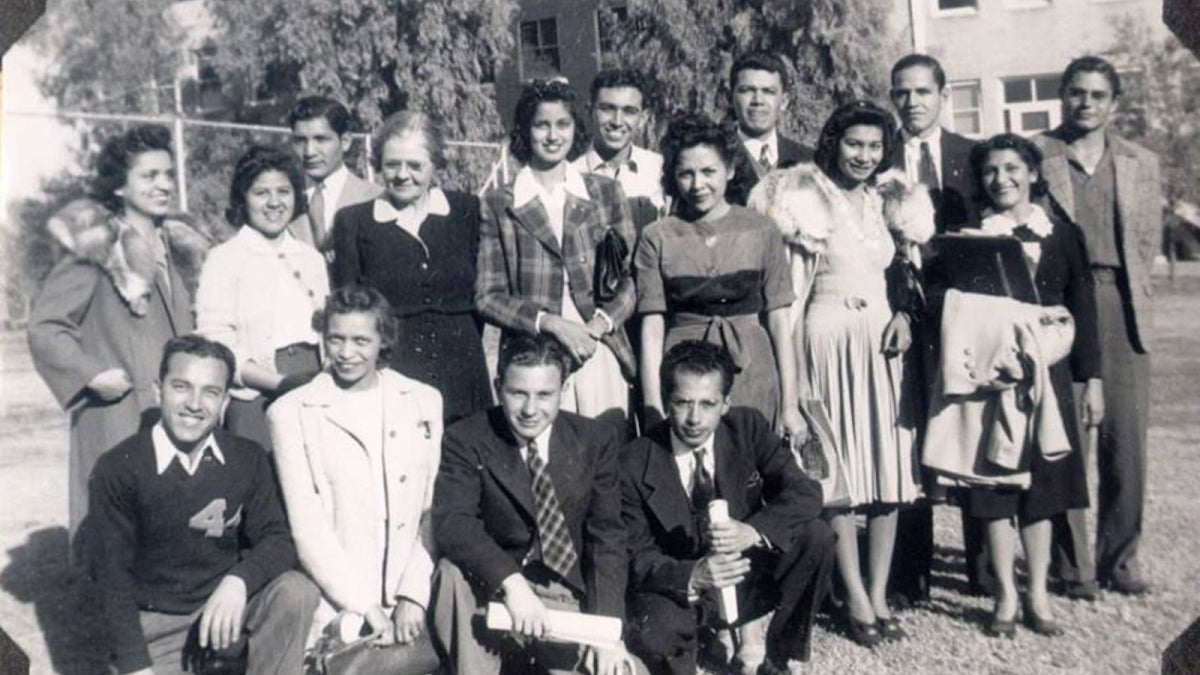Sept. 15 marks the start of Hispanic Heritage Month. It’s a time to honor the contributions that Hispanics and Latinos have made to science, the arts, social justice and more.
It’s also time to notice the unusual timing — a midmonth start — for a heritage month. (Want to know why? Keep reading.)
Hispanics/Latinos represent nearly one-fifth of the United States’ population — and of Arizona State University’s students. In the last 10 years their enrollment has more than doubled, from 7,300 in 2005 to nearly 17,000 in 2015. At ASU, the heritage month is being celebrated with a number of events, including festivals, traditional foods, film screenings, discussions and dance.
The history of nationally observing Hispanic/Latino heritage dates back to President Lyndon Johnson’s 1968 proclamation of Hispanic Heritage Week, to include Sept. 15 and 16 to honor the independence days of several Latin American neighbors. However, it was not until 1988 that Congress would pass a law establishing National Hispanic Heritage Month designating a “31-day period beginning Sept. 15 and ending on Oct. 15.”
10 things to know as we celebrate Hispanic Heritage Month
1. Why the mid-month start? Sept. 15 (1821) is an important date because it honors the day of independence for Costa Rica, El Salvador, Guatemala, Honduras and Nicaragua.
2. Sept. 16 is also a key date: Mexico's day of independence (1810). Many mistake Cinco de Mayo for our southern neighbor's independence day, but the widely celebrated May 5 holiday commemorates the victory at the Battle of Puebla in 1862 where Mexican forces defeated the French invaders.
3. Hispanics/Latinos are considered the largest ethnic or racial minority in the United States at more than 56 million, more than 17 percent of the total population, according to the U.S. Census.
4. At ASU, there were 13,208 students during fall 2015 who identified as Hispanic/Latino — more than 18 percent of the student population.
5. ASU is No. 1 among Pac-12 universities for the number of Latino graduates.
6. ASU was ranked 13th in Hispanic Outlook in Higher Education magazine’s 2015 rankings of U.S. higher-education institutions for the number of undergraduate degrees conferred to Hispanics in several key areas.
7. Oct. 12 is often celebrated as Columbus Day. However, in many Latin American countries and in various U.S. communities, it is celebrated as Día de la Raza — among other names — to honor the discovery of the Americas as well as mixed Indigenous and European heritages.
8. Hispanic and Latino are not the same thing. The term “Hispanic” once represented a relationship to the people of ancient Hispania — the Iberian Peninsula, principally divided by modern Spain and Portugal. Currently, it is widely regarded as a term that signifies the cultural resonance to contemporary Spain and to countries once colonized by Spain (thus, those living in Brazil would not be included). Latino generally refers to someone from Latin American origin or ancestry.
9. The term Hispanic was adopted by the U.S. government in the early 1970s after Grace Flores-Hughes and what was then known as an U.S. Department of Health, Education and Welfare interdepartmental committee convened to develop a comprehensive term to describe people of Spanish, Mexican, Central and South American or Caribbean (Spanish speaking) descent.
10. Prior to 1970, Spanish and Latin American immigrants were classified as “white” and grouped with European Americans. It was not until 1970 when a separate question on origin or descent was asked on the census. However, this question appeared to only 5 percent of the population. In June 1976, Congress passed a law mandating the collection and analysis of data for “Americans of Spanish origin or descent.” A separate question on Hispanic origin or descent appeared on the 1980 census. Seventeen years later, revised standards on race classifications resulted in Hispanic becoming “Hispanic or Latino.” The term “Latino” would later appear in the 2000 census and further amended in the 2010 census.
The events celebrating Hispanic Heritage Month at ASU are part of the broader cultural engagement at the university. Culture @ ASU aims to create a community that values, appreciates and accepts others through a variety of events and activities, while introducing students to the rich cultural fiber at ASU.
The Hispanic Heritage Month Planning Committee contributed to this story. Top photo from the ASU Chicano/a Research Collection and University Archives.
More Sun Devil community

A champion's gift: Donation from former Sun Devil helps renovate softball stadium
Jackie Vasquez-Lapan can hear the words today as clearly as she did 17 years ago.In 2008, Vasquez-Lapan was an outfielder on Arizona State University’s national championship-winning softball team,…

Student-led business organization celebrates community, Indigenous heritage
ASU has seen significant growth in Native American student enrollment in recent years. And yet, Native American students make up less than 2% of the student population.A member of the Navajo Nation,…

Remembering ASU physical chemist Andrew Chizmeshya
Andrew Chizmeshya, a computational chemist and materials scientist whose work spanned over three decades at Arizona State University, died on March 7 at the age of 63.A dedicated mentor and cherished…


